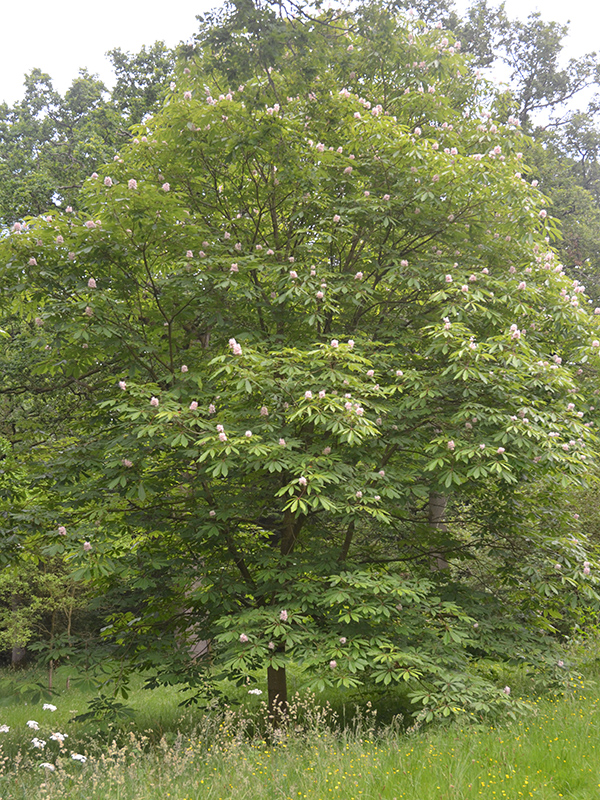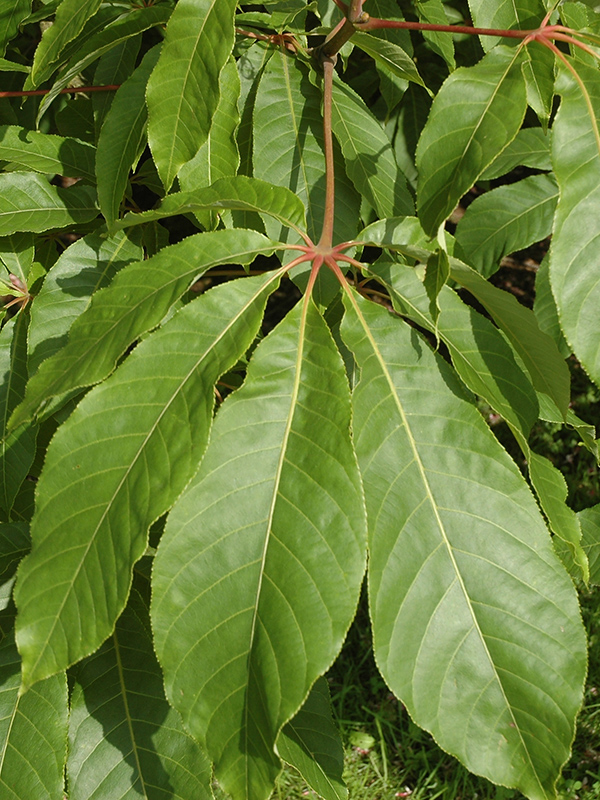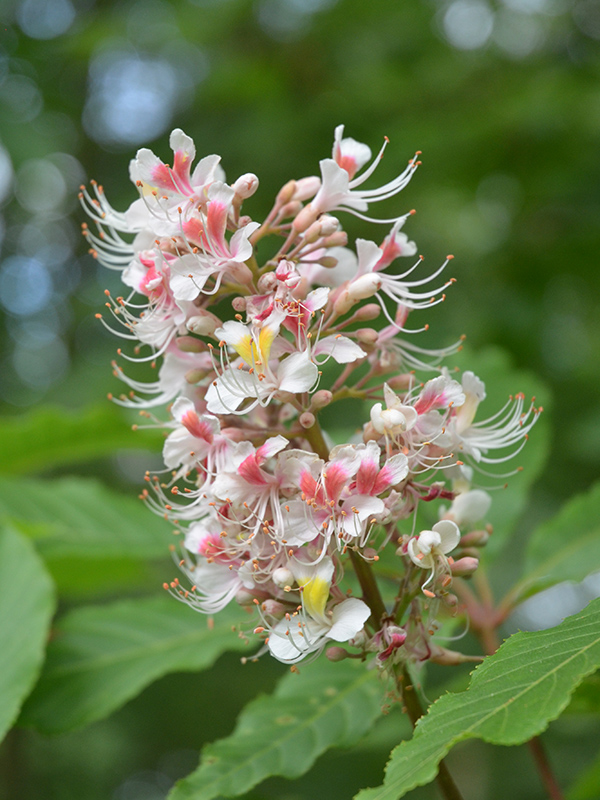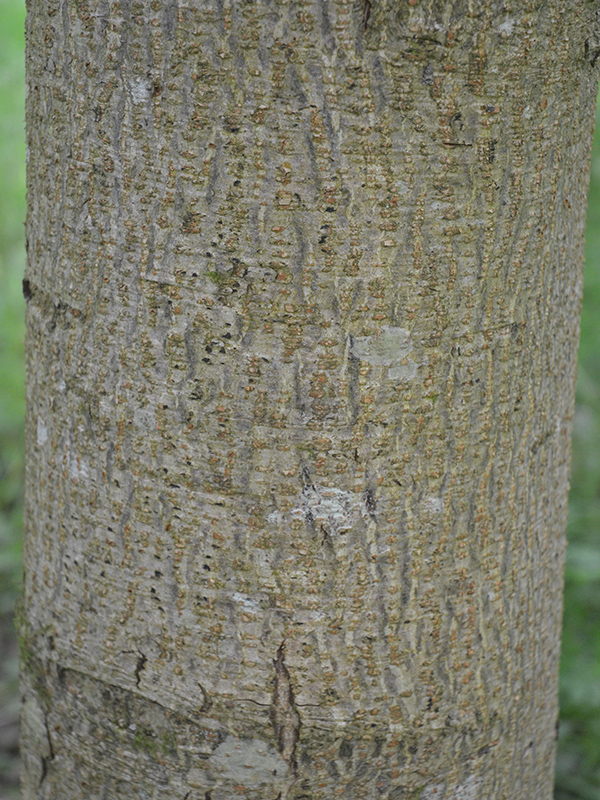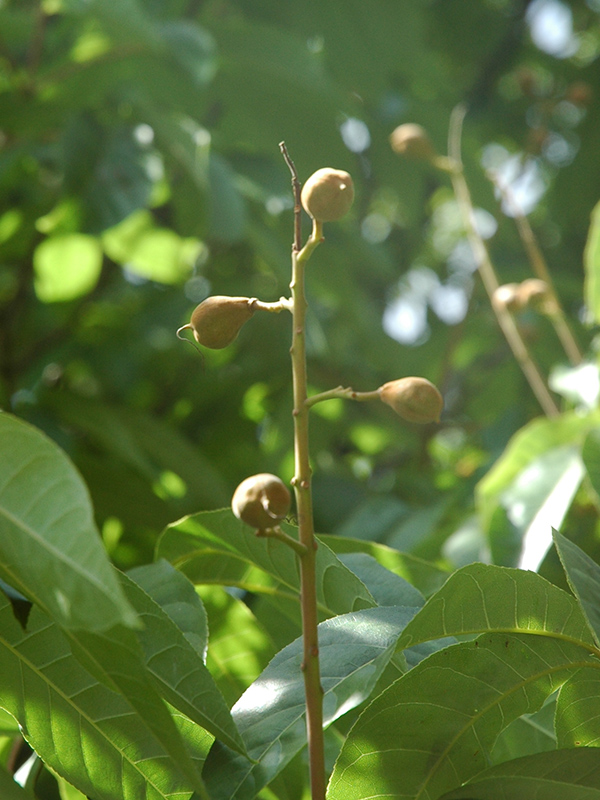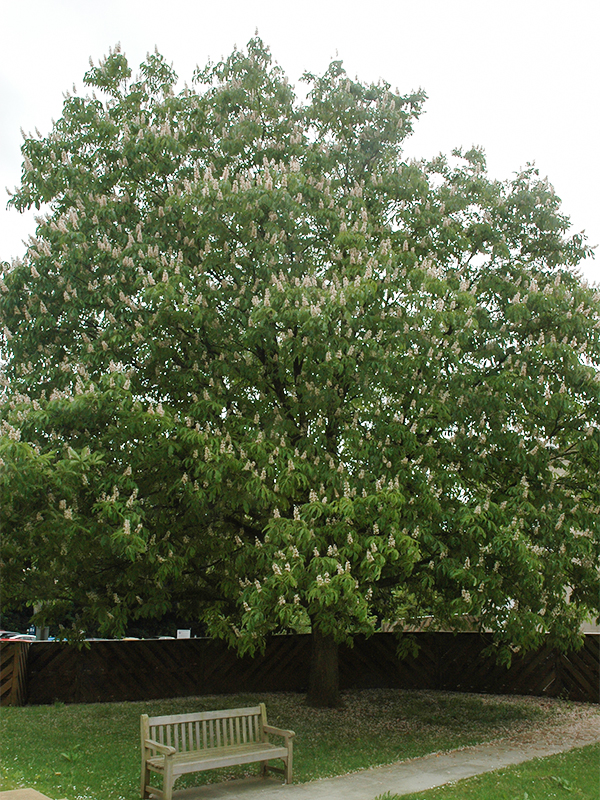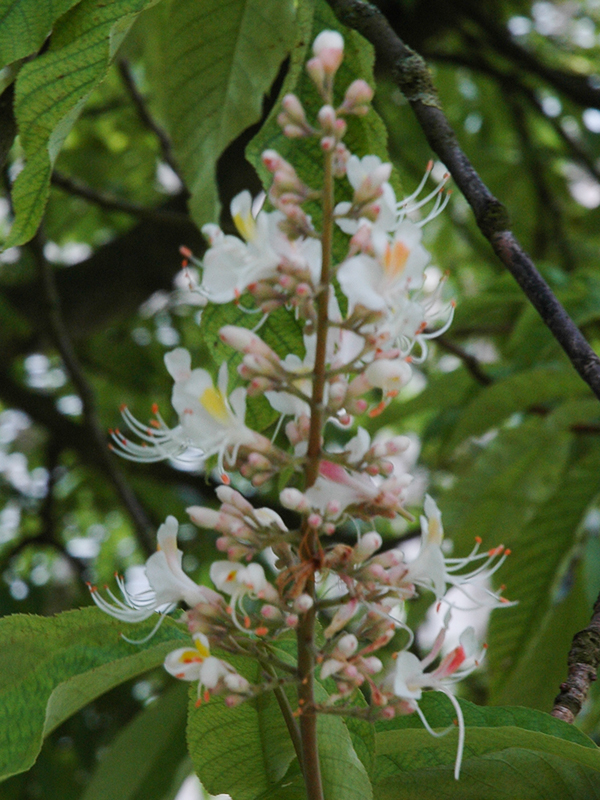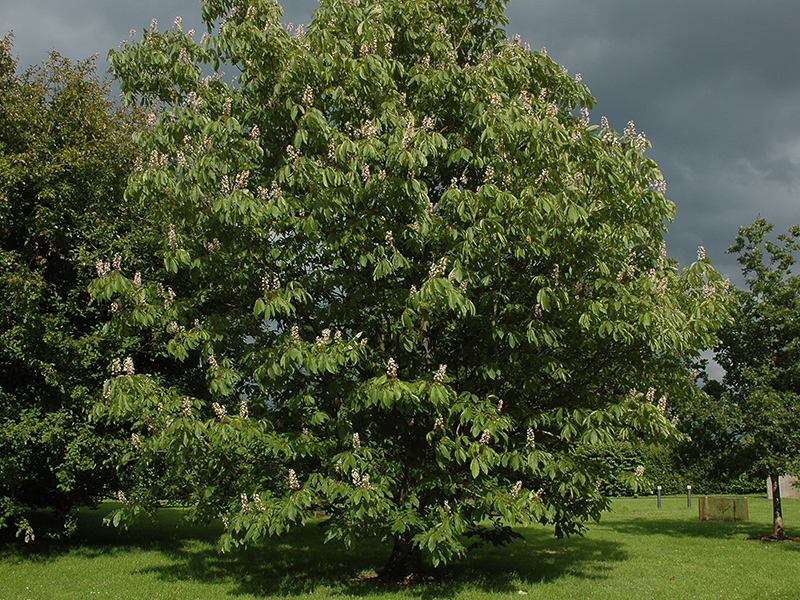| General Description | The peeling bark of A. indica is a smooth, grey-green and while it flowers (July), almost six weeks later than other horse chestnut species its spiked pinkish-white flowers are equally as attractive.
|
| ID Characteristic | Fragrant pink-white flowering tree, low growing and similar in character to Aesculus hippocastenum but smaller.
|
| Shape | Dense, domed, oval crown and bushy. |
| Landscape | Specimen planting and larger gardens. |
| Propagation | Seed and grafting. |
| Cultivation | Full sun and partial-shade. Well-drained and moisture-retentive soil with a pH of acidic, alkaline and neutral. Prefers sand, clay, chalk and loam. |
| Pests | Susceptible to horse chestnut scale, leaf-mining moths, coral spot and leaf spot.
|
| Notable Specimens | The University of Sussex, Brighton, England. |
| Habitat | Mountain slopes and in moist, shady valleys. |
| Flower/Leaf Bud Description | Ovoid, acute and 1.5 cm in size. |
| Leaf Description | The leaves are palmately compound with 5 - 9 leaflets. Leaves can grow up to 30 cm long. Leaflets are 5 - 9 cm in size. |
| Flower Description | Flowers appear in upright spikes which can grow up to 30 cm. |
| Fruit Description | Sub-globose, 6 cm in diameter with soft, sharp spines. The fruit has 1 - 3 seeds that are 4 cm in diameter. Ingestion of seed may cause severe discomfort. |
| Colour Description | The bark is grey with marks of white that become pinkish-beige. The buds are reddish-brown. The leaves are a pinkish-bronze that hardens to a bright green turning yellowish-orange in autumn. The flowers are white with a red or yellow splotch. The fruit is green and the seeds are a dark brown with a beige circular patch. |
| Texture Description | The bark is smooth and exfoliating. The leaves have a glossy texture. |
